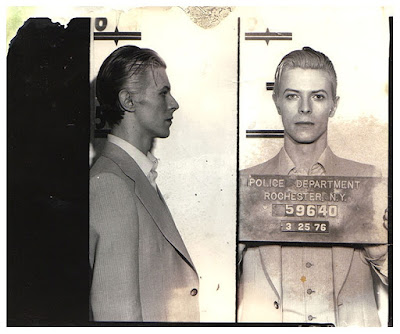I got the scanner a couple of days ago, and started testing it with my original nude slides for Mugshots. It comes with both its own Cyberview driver, and with Silverfast8.
The Cyberview Driver prescan looked pretty good after adjustments, but when I tried a scan at 5000dpi with Dust and Scratch Removal, Grain Reduction, and the Double Scanning HDR like feature, it took an hour, and the result was completely whacky, although actually quite good looking:
I then tried the Silverfast Driver. First results with manual histogram and curves adjustment, iSRD Dust and Scratch removal (similar to ICE, with an infrared scan) were good, but a bit muddy(right), so I tried cutting out some black, but then lost detail in the deep shadows, although the overall scan looked much better(left).
It's actually always been the problem with slides with a full range of densities, even wgen I had rgw Nikon scanner.
I thought I would use the double scan with the HDR like feature, but realized that to do that, I would have to spend $70 to upgrade to Silverfast Plus... Bummer! So I wondered whether I can just do several scans and combine them with Photomatix Pro as I do with photographs. I combined the two scans, and the result showed better shadow detail, better highlight detail, and much less grain:
In fact, I am quite impressed, and think I won't spend the extra 70 bucks to activate the HDR feature. In fact, I think I might do even better, using 3, may be even 5 scans from light (good detail in the deep shadows) to dark (good detail in the highlights). I tried
The Cyberview Driver prescan looked pretty good after adjustments, but when I tried a scan at 5000dpi with Dust and Scratch Removal, Grain Reduction, and the Double Scanning HDR like feature, it took an hour, and the result was completely whacky, although actually quite good looking:
I then tried the Silverfast Driver. First results with manual histogram and curves adjustment, iSRD Dust and Scratch removal (similar to ICE, with an infrared scan) were good, but a bit muddy(right), so I tried cutting out some black, but then lost detail in the deep shadows, although the overall scan looked much better(left).
It's actually always been the problem with slides with a full range of densities, even wgen I had rgw Nikon scanner.
I thought I would use the double scan with the HDR like feature, but realized that to do that, I would have to spend $70 to upgrade to Silverfast Plus... Bummer! So I wondered whether I can just do several scans and combine them with Photomatix Pro as I do with photographs. I combined the two scans, and the result showed better shadow detail, better highlight detail, and much less grain:
In fact, I am quite impressed, and think I won't spend the extra 70 bucks to activate the HDR feature. In fact, I think I might do even better, using 3, may be even 5 scans from light (good detail in the deep shadows) to dark (good detail in the highlights). I tried































